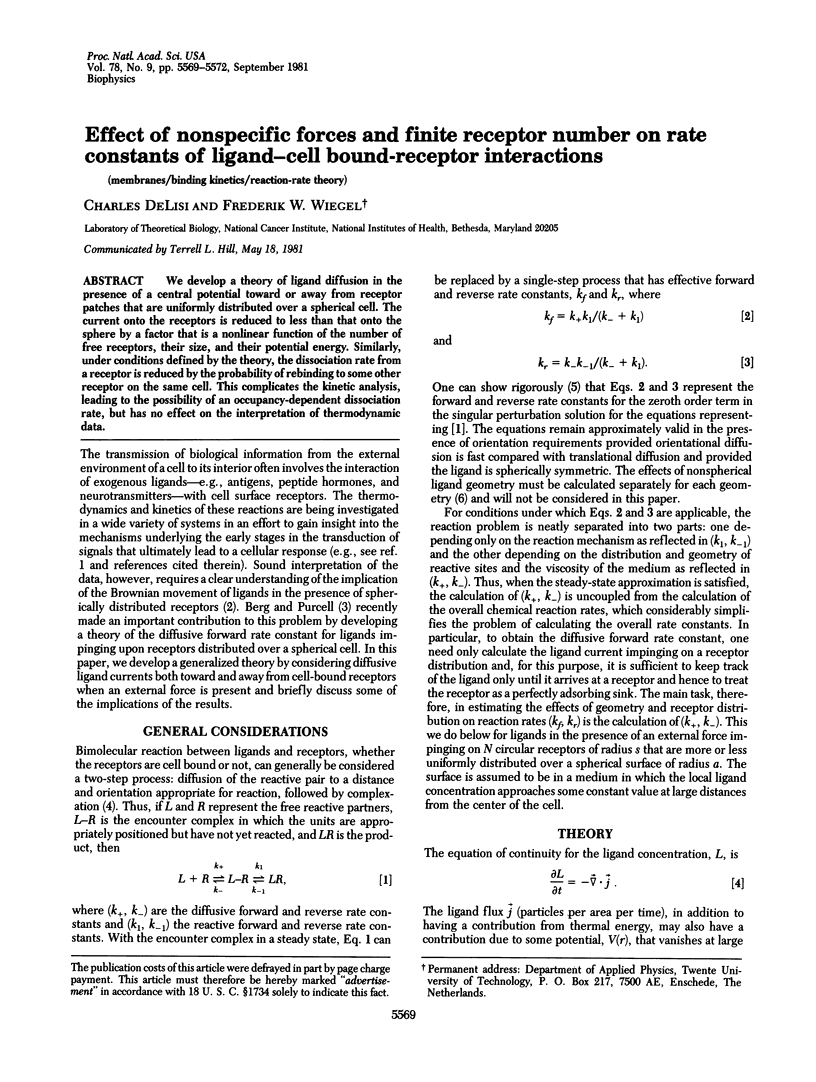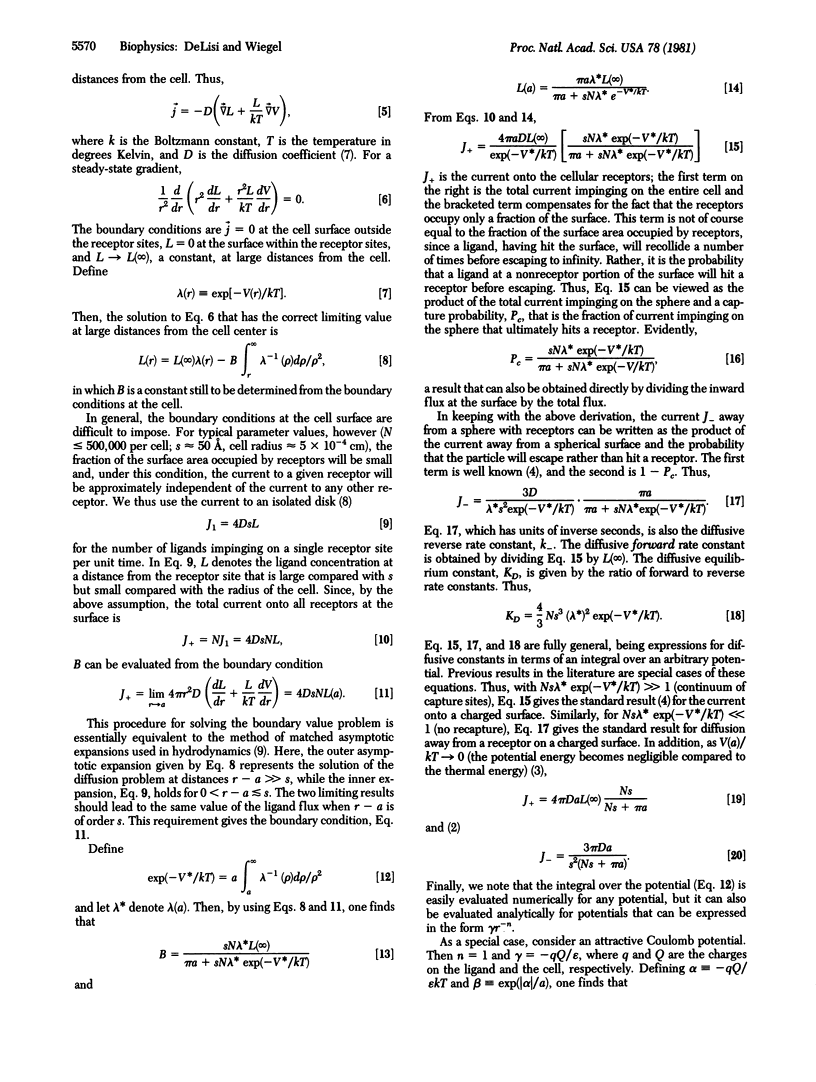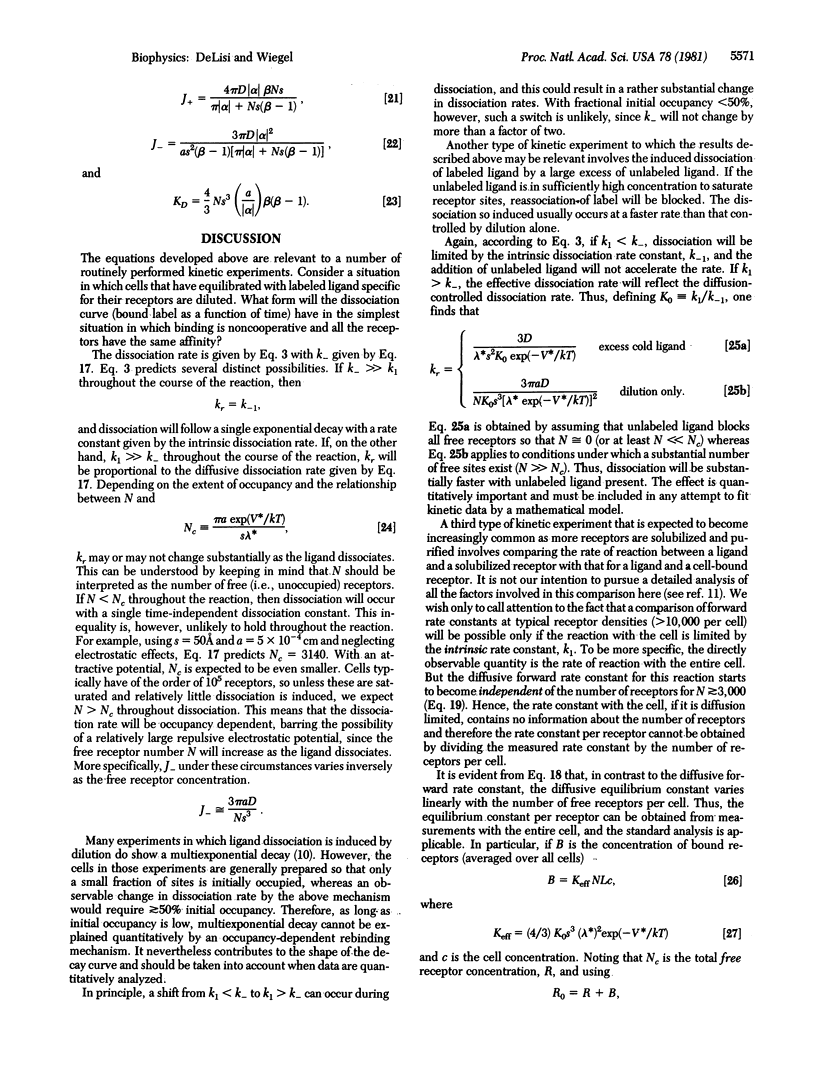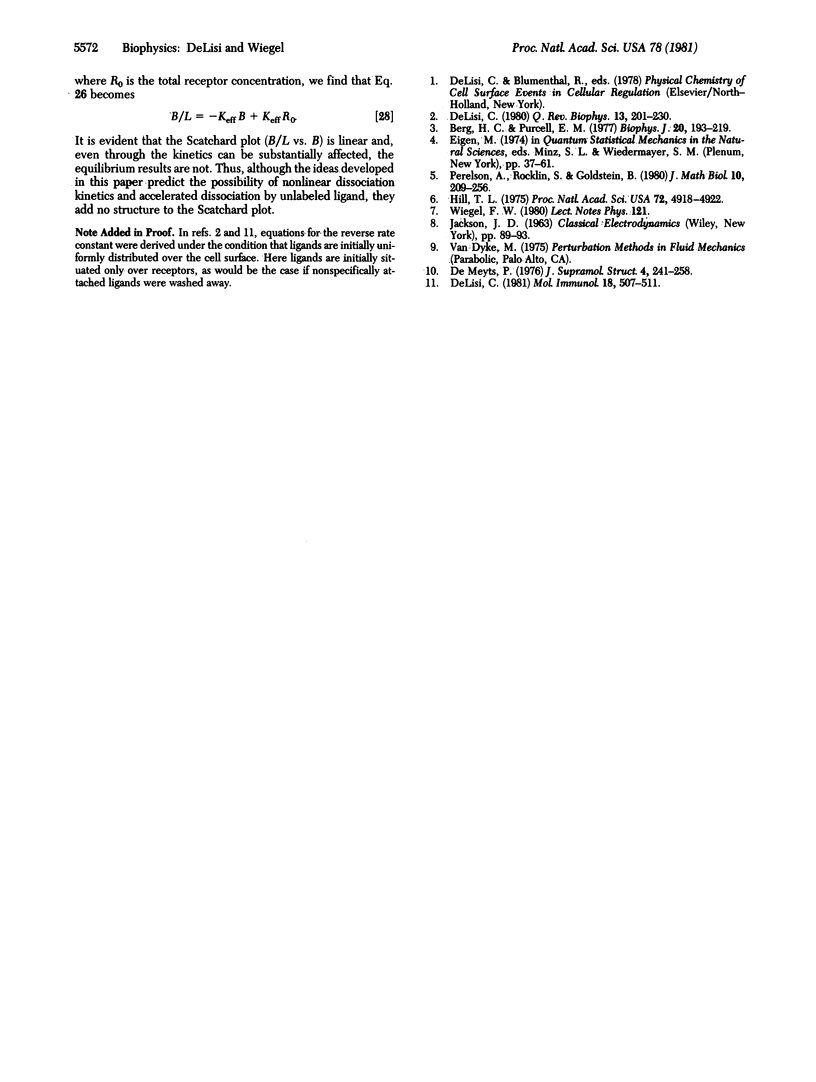Abstract
We develop a theory of ligand diffusion in the presence of a central potential toward or away from receptor patches that are uniformly distributed over a spherical cell. The current onto the receptors is reduced to less than that onto the sphere by a factor that is a nonlinear function of the number of free receptors, their size, and their potential energy. Similarly, under conditions defined by the theory, the dissociation rate from a receptor is reduced by the probability of rebinding to some other receptor on the same cell. This complicates the kinetic analysis, leading to the possibility of an occupancy-dependent dissociation rate, but has no effect on the interpretation of thermodynamic data.
Full text
PDF



Selected References
These references are in PubMed. This may not be the complete list of references from this article.
- Berg H. C., Purcell E. M. Physics of chemoreception. Biophys J. 1977 Nov;20(2):193–219. doi: 10.1016/S0006-3495(77)85544-6. [DOI] [PMC free article] [PubMed] [Google Scholar]
- De Meyts P. Cooperative properties of hormone receptors in cell membranes. J Supramol Struct. 1976;4(2):241–258. doi: 10.1002/jss.400040211. [DOI] [PubMed] [Google Scholar]
- DeLisi C. The biophysics of ligand-receptor interactions. Q Rev Biophys. 1980 May;13(2):201–230. doi: 10.1017/s0033583500001657. [DOI] [PubMed] [Google Scholar]
- DeLisi C. The effect of cell size and receptor density on ligand--receptor reaction rate constants. Mol Immunol. 1981 Jun;18(6):507–511. doi: 10.1016/0161-5890(81)90128-0. [DOI] [PubMed] [Google Scholar]
- Hill T. L. Effect of rotation on the diffusion-controlled rate of ligand-protein association. Proc Natl Acad Sci U S A. 1975 Dec;72(12):4918–4922. doi: 10.1073/pnas.72.12.4918. [DOI] [PMC free article] [PubMed] [Google Scholar]
- Perelson A. S., Goldstein B., Rocklin S. Optimal strategies in immunology III. The IgM-IgG switch. J Math Biol. 1980 Nov;10(3):209–256. doi: 10.1007/BF00276984. [DOI] [PubMed] [Google Scholar]


